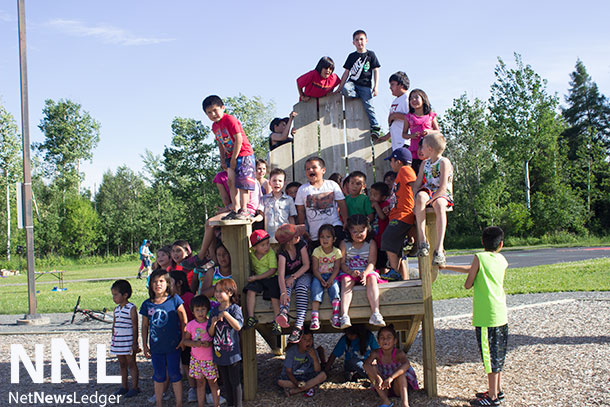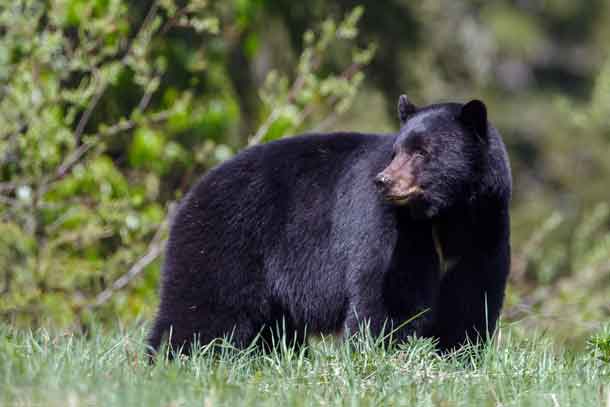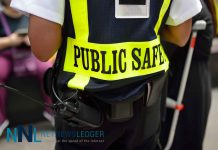‘Resilience hubs’ initiative seeks to address lack of trust in government, particularly in vulnerable communities
* About 40 ‘resilience hubs’ are operating or being developed
* Public interest boosted by pandemic, racial justice conversation
* Urban resilience measures look beyond climate change
By Carey L. Biron
WASHINGTON – (Thomson Reuters Foundation) – When Minneapolis erupted last year following the death in police custody of George Floyd, a 46-year-old Black man, some officials worried their ability to respond to the social unrest was hamstrung by years of mounting distrust of government.
That prompted concerns about how the city could effectively respond to any crisis situation, now and in the longer term.
Ron Harris, the city’s chief resilience officer, said it had faced challenges to faith in government for some time but now people were paying more attention to the consequences.
“When you don’t have that trust, you can’t give clear directions on how to respond to COVID-19, (you) can’t tell people to go inside for curfew to separate rioters from protesters,” he told the Thomson Reuters Foundation.
Across the country, those in similar jobs have focused largely on threats linked to climate change, Harris said, but over the past two years he has sought to expand the scope.
“Things that shock a community have to do with climate, but more urgently they have to do with systemic inequities,” he said, pointing to police shootings, civic unrest, the growth of homeless encampments and more.

Yet Harris also saw the roots of a solution during last year’s protests: neighbors, businesses and others came together to “raise resources, organize communications, medicine pickups for the elderly – even organize ambulance services”.
Grasping the need to nurture such organic responses, a growing group of cities including Minneapolis are experimenting with a strategy for doing that: so-called “resilience hubs”.
The approach uses a respected local organization, such as a church or community center, and bolsters it to help prepare neighborhoods for crises – hurricanes, heatwaves, pandemics or unrest – as well as to respond and recover from them.
Outside emergency situations, the hubs function like usual, as stitches in the local fabric, strengthening community ties.
Kathy Baughman McLeod, director of the Adrienne Arsht–Rockefeller Foundation Resilience Center at the Atlantic Council, which is working on building such hubs in Miami, said communities with the most social cohesion tend to bounce back quickest from shocks.
“Survival rates are higher in places where neighbors know each other,” she said. Resilience hubs, she added, “offer an opportunity to strengthen that community aspect that’s so essential to survival and recovery”.

Low confidence in government is what prompted the creation of the first U.S. resilience hubs, in 2014 in Baltimore.
Kristin Baja was then the city’s climate resilience planner, promoting the types of work suggested by the Federal Emergency Management Agency, such as making crisis plans and kits. But she kept running into problems, especially in poorer areas.
“People said, ‘We don’t trust government.’ They talked about how disgusting shelters were, how often they weren’t open, how they wouldn’t go there even if they could,” she recalled.
So she started studying what people actually needed from such programs.
“Folks really wanted the power of self-determination and more of the ability to take care of themselves and their neighbors without having to rely on the government – especially because the government often doesn’t prioritize marginalized communities,” she said.
And so the idea for the resilience hubs took hold.
Like Harris in Minneapolis, Baja said the key is to get beyond a mentality in which resilience efforts are imposed from the top-down and activated only in a crisis. More important is to actively strengthen social bonds ahead of time.
For example, during heatwaves, where neighbors are friendly, they are more likely to make visits that can be critical to the wellbeing of vulnerable groups like the elderly.
That has been important during the COVID-19 pandemic too, alongside access to food, water, vaccines and testing, said Baja, now climate resilience programs director at the Urban Sustainability Directors Network.
Today there are about 40 resilience hubs in various phases in the United States and Canada, she said, with interest bolstered by both the pandemic and the national discussion on racial justice that followed Floyd’s death.
Ruth Lindberg, director of the Health Impact Project at The Pew Charitable Trusts, which has supported resilience hubs in Minneapolis and Baltimore, said they can help at-risk people more broadly, beyond emergency situations.
“The hubs are positioned on a day-to-day basis to be able to provide childcare, training, food distribution – services that can help respond to unmet social needs and also help prepare, respond and recover in times of crisis,” she said.
Therein lies a key difference with many traditional resilience projects, experts said.
“What I’ve always liked about the resilience hubs initiative is that they’re setting up things that will matter, no matter what,” said Sam Carter, founding principal at Resilient Cities Catalyst, a nonprofit advisory group. “It’s very understandable to people.”

FAMILY NODE
The Boyle Heights Arts Conservatory has operated in one of Los Angeles’ oldest neighborhoods for decades, running activities such as teaching youths radio broadcasting and helping with translation for the local Latino population.
“It’s a place where kids and families go to gather and be together,” said Aaron Gross, the city’s chief resilience officer.
Now Gross and others are working to turn the site into a resilience hub, part of a vision to seed such projects across the city, particularly in areas seen as most vulnerable.
Not only a long-time community focal point, the conservatory houses some potentially important emergency infrastructure: radio broadcasting equipment, a large theater space and even a commercial kitchen in a ground-floor pizzeria.
“I could argue that they were already a resilience hub without the title – and there are places throughout the city where I could say the same thing,” said Gross.
The city and partners are now helping bolster the conservatory so it has a power backup, emergency planning classes, cooling and more, and can function as a formal resilience hub, which Gross hopes to announce this year.
During the pandemic, its youth programs have already worked on public service announcements, while others bagged supplies and information for the community.
It is the type of local response that enthused Harris in Minneapolis, where the city is doing initial work to set up two resilience hubs.
One is in an affordable housing community for Native Americans and another at a community center just blocks from where Floyd was killed.
The second site was identified two years before Floyd’s death – and the effects could have been significant, said Kelly Muellman, who coordinates the city’s sustainability program.
“I think the last 12 months might have looked a little different,” she said. “We might have been able to come together in the tragedy rather than continue to fight.”
(Reporting by Carey L. Biron; editing by Megan Rowling. Credit the Thomson Reuters Foundation.







